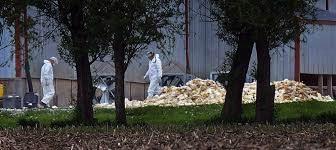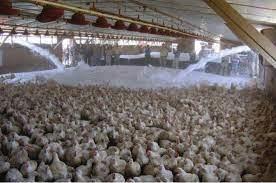 According to a January 22nd release by the USDA Animal and Health Plant Inspection Service, ventilation shutdown (VSD) with either or both heat and carbon dioxide (VSD+) will be permissible in the event of necessary depopulation following exposure to HPAI.
According to a January 22nd release by the USDA Animal and Health Plant Inspection Service, ventilation shutdown (VSD) with either or both heat and carbon dioxide (VSD+) will be permissible in the event of necessary depopulation following exposure to HPAI.
It is generally accepted that rapid depopulation limits dissemination of virus especially from large concentrations of commercial poultry such as a multi-house egg production complex. The USDA-APHIS will allow VSD+ under specific circumstances for confined poultry including aviary and cage-housed hens.
According to the release, USDA will grant application of VSD for mass depopulation provided:
- Alternative methods are unavailable within an acceptable period.
- Recognition that multiplication of virus will represent a danger to farms within a three mile zone
- Approval by state officials, incident management and the National Incident Coordinator
 In considering the application for VSD+, a farm-by-farm evaluation will be conducted taking into account available resources and the epidemiologic implications of any delay in depopulation given a 24 to 48-hour goal for a specific farm or complex.
In considering the application for VSD+, a farm-by-farm evaluation will be conducted taking into account available resources and the epidemiologic implications of any delay in depopulation given a 24 to 48-hour goal for a specific farm or complex.
The 2019 AVMA Guidelines for the Depopulation of Animals provides for either VSD alone or with supplementary heat and or carbon dioxide providing all other options are evaluated and considered infeasible. Ventilation shutdown alone is regarded as a last resort measure.
For floor-housed flocks, carbon dioxide or water-based foam will be deployed providing equipment is available and trained personnel conduct the procedure under supervision of state and federal authorities.
The efficacy of either VSD or VSD+ is dependent on the specific size of the flock, construction of the house, and availability of personnel to achieve depopulation within 48-hours following a diagnosis.
It is self-evident that application of VSD, or for that matter any mass depopulation method, will elicit objections and negative publicity from animal welfare activists. In past outbreaks, these organizations have improperly attributed avian influenza to large-scale intensive production. While the scope of losses due to disease and depopulation are a function of the size of operations and location of units in close proximity, migratory waterfowl are responsible for introduction of the infection.
To preempt adverse publicity arising from either a limited or an extensive HPAI outbreak, the egg industry through UEP has established procedures for crisis control. It is considered essential that consumers and the public be informed that HPAI, and specifically H5N1 that will be the most probable strain involved in any outbreak in 2022, is not transmissible to humans through eggs. Rapid diagnosis will in any event prevent release of eggs from affected farms. Since all eggs are washed using a chlorine-based sanitizing solution there is a limited possibility of viable virus occurring on eggs.
Despite the high prevalence of H5N1 avian influenza virus among migratory waterfowl along the Eastern seaboard of the U.S., and now in probability in the Mississippi flyway, the industry has devoted considerable resources to both structural and operational biosecurity to limit the possibility of introducing infection onto commercial farms. An unfortunate reality is that backyard flocks and free-range poultry favored by the opponents of intensive egg production are more susceptible to avian influenza than confined flocks held under conditions of high biosecurity.